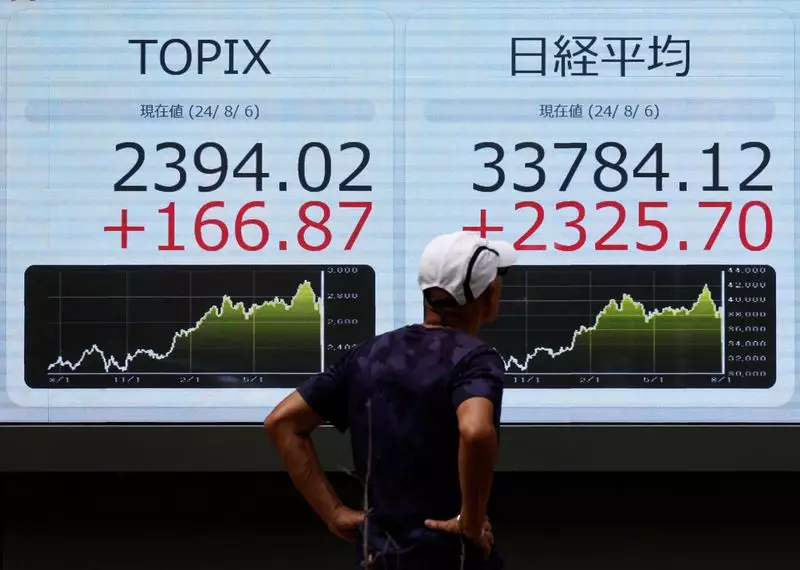As of Tuesday, Asian equity markets reflected a cautious optimism, reaching their highest levels in over two months. This positive sentiment has largely stemmed from anticipated cuts to U.S. interest rates, bolstering risk appetite among investors. The backdrop to this environment is marked by a watchful eye on the Reserve Bank of Australia (RBA), which is expected to maintain its current interest rates during an imminent policy decision. Concurrently, significant announcements from Chinese financial regulators have promised a range of economic support measures aimed at revitalizing the country’s struggling financial landscape.
The response from investors has been one of measured stability, with the MSCI Asia-Pacific index, excluding Japan, inching upwards by 0.04%, reaching a notable 586.31— a threshold not seen since mid-July. On the other hand, Japan’s Nikkei index saw a robust increase of 1.69%, marking nearly a three-week peak, primarily driven by growth in early trading.
China’s central bank recently unveiled a recruitment of strategies intended to stimulate economic growth, including a 10 basis point reduction in its 14-day repo rate. Such moves came just days after its decision not to make cuts to longer-term rates disappointed market observers. This potent mix of measures reveals an aggressive stance aimed at combating sluggish economic performance and shows the government’s commitment to sustaining growth. Investors are now weighing how effective these interventions might be in shifting the economic trajectory positively.
In contrast to China’s proactive measures, the RBA’s likely continuation of its hawkish approach reflects a broader view on inflation control. Analysts, including Charu Chanana from Saxo, suggest that the bank may reconsider its stance only at its upcoming November meeting, dependent upon forthcoming employment figures and consumer price index (CPI) reports.
Recent market activities in the United States reinforce the sentiment surrounding the Fed’s potential for future easing policies. Last week, the Federal Reserve enacted a 50 basis point rate cut, a substantial decision that has led to renewed conversations about monetary easing. Fed officials, such as Chicago Fed President Austan Goolsbee, highlighted the importance of this easing in fostering a “soft landing” for the U.S. economy without falling behind on their dual mandate of inflation and employment.
Despite this, not all analysts are optimistic about the rate of future cuts. Elias Haddad, from Brown Brothers Harriman, expressed concern that market expectations may be overly optimistic regarding the Federal Reserve’s capacity for continued easing. The upcoming non-farm payrolls report on October 4 will be a critical indicator since substantial employment data will likely catalyze any adjustments in the Fed’s rate forecasts.
In the foreign exchange markets, the U.S. dollar index remained close to its one-year low, hovering around 100.95, while the Japanese yen and euro displayed relative stability. However, the euro experienced a slight decline, indicating underlying vulnerabilities in the eurozone economy, particularly following disappointing business activity reports. Such factors have consequently intensified speculation regarding potential rate cuts by the European Central Bank.
The Australian dollar saw minimal fluctuations, slightly down by 0.15% at $0.6828 but remaining near its highest value in nine months. This indicates that while there is pressure on currencies, the Australian dollar might continue to stabilize amid supportive global economic policies.
In commodity markets, oil prices witnessed a moderate increase, with Brent crude futures climbing 0.26% to $74.09 per barrel and U.S. crude oil prices rising by 0.3% to $70.60. The earlier drop in oil prices, attributed to demand concerns and lackluster economic data from Europe, emphasizes the tenuous nature of post-pandemic recovery efforts globally.
While Asia’s stock markets currently exhibit a positive trajectory largely influenced by global monetary policies, the situation remains dynamic. The interplay between economic data, monetary policy, and currency stability will continue to shape market sentiment in the coming weeks. Investors remain vigilant as they navigate the complexities of a potentially shifting economic landscape.

